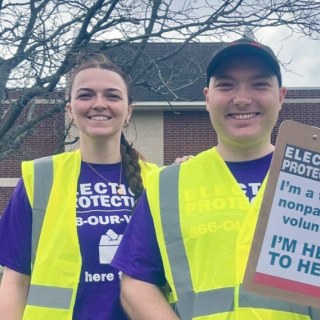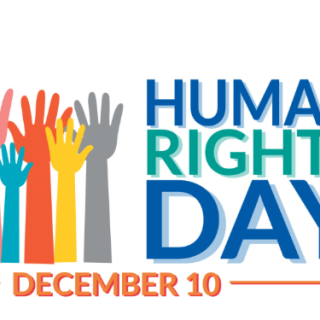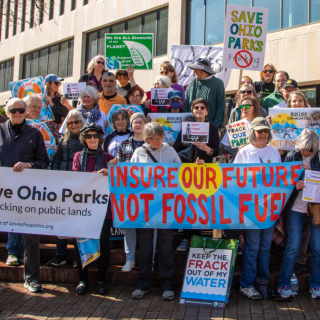Advertisement
Ohio communities have been living with leaking injection wells, spills in and around the facilities. We also know that loading and unloading of oil and gas liquid waste causes one of the highest levels of toxic air emissions during the entire fracking process. Right now the Ohio Department of Natural Resources is writing new rules for the class two injection well program. These rules are totally inadequate to protect our families or our water. For example, the rules provide for a setback of only 100 feet from private drinking water wells, rivers and streams, and wetlands. This is not enough to protect our drinking water or aquatic life.
This is some of why we feel it is critical that our next step is for all of you to help us demand that ODNR rescind the rules from JCARR in order for our concerns with the rules be addressed to be resubmitted next year.
Contact Chief Eric Vendel Eric.Vendel@dnr.ohio.gov (614) 265-6631
Here is a draft email/script
Dear .Mr. Vendel:
I am extremely concerned about the current draft for oil & gas injection and facility rules that have been submitted to JCARR for review. These rules do not adequately protect Ohioans from the hazards of radioactive oil & gas waste. We understand that several groups and individuals have submitted their concerns regarding these rules and hardly any of them have been considered. This is unacceptable and we demand that these rules be rescinded from JCARR and that the public comments and concerns be probably addressed and considered. The rules can then be resubmitted for next year.
Thank you,
Below are some injection well and facility talking points that you may use.
Class II Injection Well Talking Points.
- ODNR failed to provide the following requested public information in a timely manner. Therefore, our ability to comment on these rules is incomplete.
- The legislative intent of 1509.22 is to make rules that carry out the requirements of the Safe Drinking Water Act. These rules do not meet those minimum requirements. They fail to meet the Safe Drinking Water Act’s minimum requirements for enforceability, public participation, and addressing environmental justice concerns.
- These rules are not for salt water wells, they are for injecting hazardous liquids likely including PFAS, a forever chemical.
- The ODNR failed to provide any rules for permits to inject.
- The ODNR does not provide for any public participation or public notice for the permit to inject. This is the only portion of the injection well permitting process that could be appealed. However, because there is no public notice, appeals are impossible. The only way to know if a permit to inject has been issued is to request that information directly from the ODNR, weekly.
- The only public notice in this process is for the initial application for a Class ll well. Applications do not contain enough information to make adequate comments. Significant changes may be made between the application and the permit to inject.
- The ODNR failed to provide any environmental justice review for class II wells.
- The ODNR failed to create rules that provide strong enforcement mechanisms, and the proposed rules does not give ODNR the authority to levy fines for violations.
- ODNR failed to provide for adequate setbacks, to protect our health and the environment.
- The rules provide for a setback of only 100 feet from private drinking water wells, surface waters, and wetlands This is not enough to protect our drinking water, and aquatic life.
- The ODNR failed to completely prohibit injection into shale formations. Injection into shale formations caused the migration of oil and gas waste into production wells in Washington County.
- The proposed rules fail to require timely reporting. The rules only require annual reporting of the volume disposed, and the source. This makes it difficult to get information about what is occurring at the well site. When source information has been requested from the ODNR, their response is that only brine haulers need to report that information.
- ODNR has failed to establish a definitive check and balance to assure that all well data as presented is accurate and unaltered.
- The proposed rules will allow multiple class II wells in one application process. Creating confusion with the public.
- These proposed rules conflict with Legislative intent which directs ODNR to create rules for a program that is effective and safe.
- ODNR failed to require testing to characterize the waste product that is being disposed of. Therefore, the ODNR won’t know how to respond to a spill or release of waste. They will not know what contaminates or the source to look for.
- ODNR failed to provide a fiscal analysis that included the expenses covered by the state for cleanup and closure.
- ODNR failed to protect taxpayers from the expenses of cleanup and closure facilities by not requiring sufficient bonding and financial assurances to cover these costs in their fiscal analysis.
- The ODNR failed to write rules that will protect against the accidents and blow outs that have already happened at injection well sites. They happened in the recent past and will happen again in the future. It is just a matter of where and when.
- The ODNR has failed to close wells that are incapable of injection under current rules. ODNR is already in conflict with current rules, and the Safe Drinking Water Act due to their lack of enforcement of closure orders.
Talking Points Ohio Oil and Gas Waste Facilities Proposed Rules
- ODNR failed to develop effective and protective regulations program for oil and gas waste facilities.
- The proposed rules include less oversight by ODNR than what the agency is currently doing. ODNR failed to require regular inspection of oil and gas waste facilities by ODNR. Instead, the rules leave inspections up to the facility operator.
- This rollback of ODNR oversight of the regulations is shameful and vulnerable to abuse, putting our environmental justice communities at risk.
- The ODNR failed to address the radioactivity levels in oil and gas waste in any way that would be protective of public health, worker health, and the environment.
- The proposed rules only require that some types of radioactivity (TENORM) be tested for and reported. Other types of radioactivity (NORM) will not be tested at all. This arbitrary distinction between NORM and TENORM is totally irrelevant when it comes to human exposure to radioactivity. It also violates the well understood principle that all radioactivity exposure should be below as possible, but no higher than background levels.
- The draft rules do not require that all oil and gas waste facilities have a radiation protection plan, despite it being well understood that oil and gas waste contains high levels of radioactivity.
- ODNR failed to establish a system that will track oil and gas waste from cradle to grave and ensure that radioactive materials are not making their way into public drinking water sources.
- ODNR failed to establish protections for private drinking water wells, surface water and groundwater. The proposed rules would allow oil and gas waste facilities to be located a mere 100 feet from wetlands, surface waters, developed springs, and water wells.
- ODNR failed to write enforceable regulations for oil and gas waste facilities.
- ODNR gives themselves wide discretion to waive requirements while not taking into consideration environmental justice impacts. Example; they can waive permit requirements, required testing procedures, any environmental protection plans, and impact to public health.
- Because ODNR has given themselves such wide discretion, instead of clear rules and regulation, it opens itself to legal action by industry. Ex. OMNI, AWMS.
- Because ODNR failed to require regular reporting and transparency, the industry can’t be held accountable. There will be no information for the public to access about activities occurring in their communities that have the potential to impact their health and environment.
- The proposed rules only require annual reporting to ODNR, and even then, some information (such as where waste originates) is only required to be reported if ODNR specifically asks for it.
- Reporting should take place at least quarterly, and should include information such as where waste originates. We know more about Pennsylvania waste than we do about waste generated in Ohio. Pennsylvania tracks the origin and final destination of oil and gas waste, and makes this information publicly available via a regularly-updated website.
- There is no reason Ohio cannot adopt the same system, doing so is necessary for environmental justice communities and the public to be informed and to protect their communities.
- ODNR failed to protect taxpayers from the expenses of clean-up and closure of oil and gas waste facilities by not requiring sufficient bonding and financial assurances to cover these costs.
- ODNR failed to establish clear requirements for the suspension of operation and for when a permit is to be revoked. Without clear procedures and accountability for industry, and a clear regulatory authority this entire process is and has been a joke.
- The lack of clear requirements for when operations will be suspended or a permit will be revoked makes for an ineffective regulatory framework.
- ODNR is unable to exercise the authority it has without facing legal challenge from operators. This is an ongoing problem for the agency that can be prevented by ensuring a strong regulatory framework with clear triggers for enforcement. This is lacking throughout the proposed rules.
- ODNR has failed to make a case of why waste facilities and injection wells should be permitted through the same application.
If you would like to make comments to JCARR please fill out the link below
https://drive.google.com/file/d/14E2-giCf3DvnNnGhRvZoPe2t3uQnnyWz/view?usp=sharing
Thank you for all you have done and are doing, you are making a difference,



